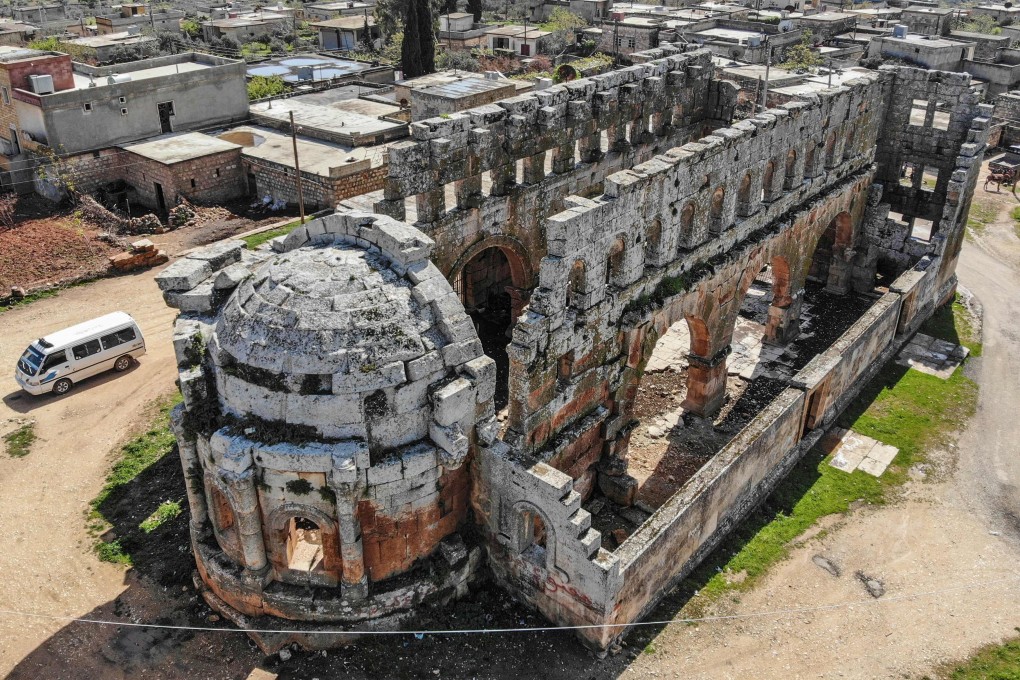In war-torn Syria’s Qalb Lozeh village, this church that ‘inspired Notre Dame Cathedral’ still stands
- 5th century basilica is an ancestor of France’s famed landmark
- Country’s finest example of Byzantine-era architecture fell into neglect after eruption of Syrian conflict in 2011

An arched entrance flanked by two towers, elaborate carvings and a broad-aisled nave: a 5th century limestone church in northwestern Syria is the architectural forerunner of France’s famed Notre Dame Cathedral.
Hemmed by the village of Qalb Lozeh (Arabic for Heart of the Almond), the cathedral which goes by the same name is widely hailed as Syria’s finest example of Byzantine-era architecture.

And it is believed to have been the source of inspiration for Romanesque and Gothic cathedrals in Europe, including the Paris landmark Notre Dame, which was ravaged by a massive fire on Tuesday.
“It is the earliest known example of the twin tower facade flanking a highly elaborate arched entrance, the precursor to what became known as the Romanesque style,” said Middle East cultural expert Diana Darke.
Romanesque architecture evolved into the Gothic style that defines Notre Dame, she said, adding that the layout of the church in northwestern Syria has many similarities with the iconic French cathedral.